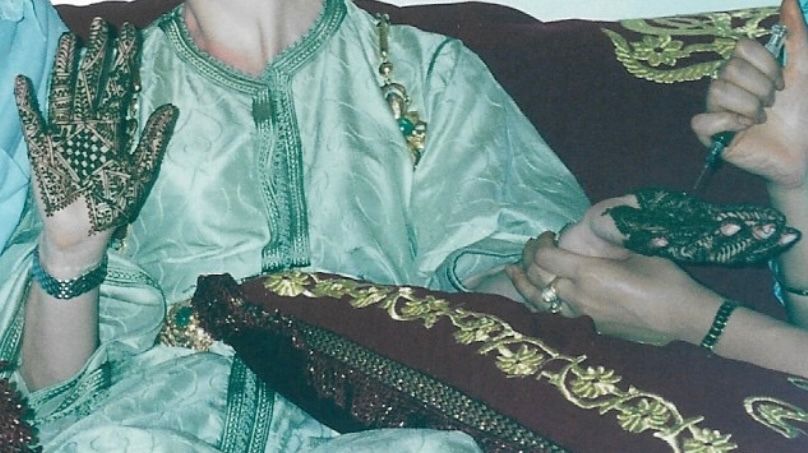Returning from holiday with a head full of images and memories is a wonderful feeling. Our henna tattooing workshop invites travelers to go one step further and return home with Morocco under their skin.
This activity will appeal to creative aesthetes who like to live their travel experiences to the full and get back home with immersive souvenir.
THE MAYFEZ HENNA TATTOOING ACTIVITY
The Mayfez henna tattoo workshop is an immersion in Moroccan culture, aesthetics and ancestral tradition.
It takes place in our Salon Josephine, on the roof top, or in the patio of the Riad, depending on the participants feelings and weather permitting.
Comfortably ensconced in cushions, you’ll give in to daydreaming, to the rhythm of the tickling of the syringe (without needles) of our tattoo artist.
Mayfez proposes a selection of tattoos, depending on your time, design and tattoo location.
Kindly note that Mayfez uses only natural ingredients and that no chemicals of any kind are used during this activity.
THE ART OF HENNA TATTOOING
A bit of history…
Henna tattooing is a traditional practice that involves drawing on the skin, usually on the hands or feet. It is an ephemeral tattoo made with henna paste, a natural colouring agent derived from the powder of a plant (Lawsonia inermis).
Although of pre-Islamic origin, it is mainly found in Arab-Muslim countries, but also in Asia.
The first traces of henna use, date back 9,000 years ago, in modern-day Turkey. Henna tattoos were, at the time, used in a religious context linked to the cult of a fertility goddess.
While the Carthaginians are credited with originating the practice of body drawing in North Africa, the real tradition of mehndi (the Indian name for henna tattooing), emerged in the 12th century, with the arrival of the Muslim Mughals.
Signification of henna tattoos
In the past, each design had a different symbolic, depending on the country. Henna tattoos not only had an aesthetic role, but also represented protection against the evil eye and jealousy.
In Maghreb, the traditional motifs were essentially geometric shapes in the form of simple or sawtooth lines, triangles, rhombuses, squares, dots, circles etc.
– vertical line: source of life, breath of God;
– two lines: dualism present in everyone;
– spiral: symbol of harmony;
– circle: symbol of the absolute;
– point: the focus, the centre;
– crescent moon: represents matter that is born, lives and dies;
– rosette: a shape whose downward point evokes water and femininity, while the upward point refers to fire and virility.
Today, North African henna tattoos also include floral motifs. Elaborate and intricate, they appear like a genuine lace on the skin.
PREPARING AND APPLYING HENNA
Henna paste is the result of grinding dried henna leaves into powder and mixing it with water, tea or coffee, to darken the colour. Sometimes lemon, sugar, or essential oils are also added; with the same aim to obtain a darker colour and longer-lasting hold.
After resting for a while, the paste is poured into a conical bag or syringe, in order to obtain fine lines.
The henna is then left to rest for at least an hour wrapped into clingfilm. The longer it stands, the deeper the colour. In the past, brides slept through the night with their hands swaddled.
There is no such thing as natural black henna.
When the crust is removed from the dried paste, the pattern is orange. Then, it darkens over time, to take on a beautiful auburn colour. To allow the colour to develop, it is important not to wash your skin in the hours following the henna tattoo. Depending on the application time, it can last up to 15 days. But this period also varies according to the type of skin, its pH level and perspiration.
Contact us for more details and registration

